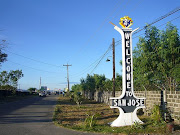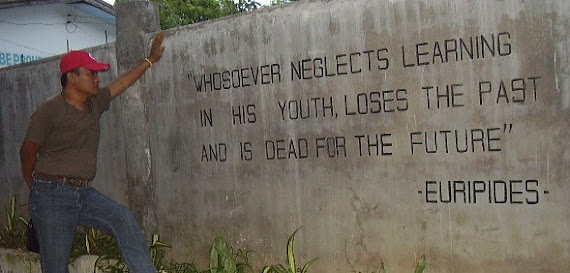The jeepney is progressively nearing
the dead end here in my home province.
These remodeled jeeps from World
War-II era was the main public transportation in San Jose as far as I can
remember. Without doubt, this inexpensive mass transportation was part of the
Philippine culture. Philippines is the only country that has jeepneys for such
a purpose.
Sarao Motors, owned by Leonardo Sarao,
was one of the first companies to take old US army vehicles left behind after
World War II and customize them for mass transport. This is the same brand of
jeepneys plying from the Pandurucan town proper to its nearby barrios, like
Bubog, Central, Camburay and Murtha and vice-versa. Since the 50s, the jeepneys
have been integral to the lives of the town’s residents together with its
operators and drivers.
The most prominent jeepney operator in
this southern part of Occidental Mindoro is Guillermo P. Mangahas. He is a
native of Norzagaray, Bulacan but transferred to San Jose in 1954. He started
to venture with one passenger jeepney with a route from San Jose town proper to
Barrio Central and vice-versa. Mangahas’ transport trade grew and he managed to
acquire additional 5 jeepney units serving the people of far-away Aguas, Pitogo
and Manoot (then still part of San Jose). Guillermo was aided by his three sons
namely, Naring (Apolinario), Pepe (Jose), and Val/Tino (Valentino) in his transport
business. His daughter Teofila was later known as Neneng Vergel who owns a meat
stall in old San Jose Public Market and mother to former local radio personality
Lerma Vergel Mansilungan.
Amado Tan is the fourth child of Tan
Bun Chuan, one of the place’s earliest Chinese settler. They family owned a
famous restaurant (now the site of the Development Bank of the Philippines
along Rizal St. near the plaza) then. In 1951, Amado Tan moved to Central and
stayed there for good and finally met his wife, Elsie Blancia of Culasi,
Antique. Amado’s sister Purification loaned him money to buy a jeepney and
since then, it became his main source of living. As a driver, he managed to
know many people, gained popularity and been so helpful in their concerns. In
1989, Amado Tan, the son of a Chinese restaurateur and later jeepney operator of
Central, was elected barangay captain of this historic place. Amado is the
father of Armando “Bong” Tan who also works as a driver at Provincial Governor’s
Office (PGO) in San Jose.
Magno Corpus is a forerunner in
jeepney operation business in Barrio Bubog where I grew up. He had 2 jeepneys
named Perla 1 and 2, (name of his only child). Later when his brother Gavino
came to the place in the early 70s from Nueva Ecija, took his own jeepney and
served the residents especially the students (that includes me) in going to
school and back. The Corpus brothers, too, became barangay officials. Magno
served as barangay captain and Gavino became kagawad for many years.
In our place, not only the US army jeeps were converted into public utility vehicles. The Dodge Weapons Carrier from WW-II were also transformed for mass transportation especially in far-flung areas with the toughest terrain. In Barrio Pitogo, Mrs. Perla Lansangan, a known businesswoman in their place then operates a weapons carrier serving her barrio mates.
In our place, not only the US army jeeps were converted into public utility vehicles. The Dodge Weapons Carrier from WW-II were also transformed for mass transportation especially in far-flung areas with the toughest terrain. In Barrio Pitogo, Mrs. Perla Lansangan, a known businesswoman in their place then operates a weapons carrier serving her barrio mates.
Maybe it is true that traditional jeepneys
are already obsolete in today's transport system and we need to have something
better in terms of mass transportation in our province. In this time of the UV
vans and the air-conditioned local buses.
But more than the machines, let us
remember today, with full pressure on the gas pedal, the drivers who operate
them.
---------
(Photos: C! Magazine/Pintrest)
Reference: Rodolfo M. Acebes, Story of 100 Families,
2010)







No comments:
Post a Comment